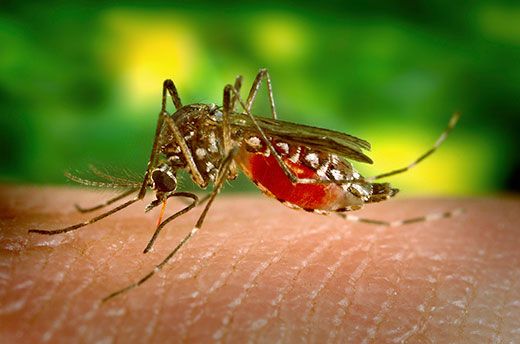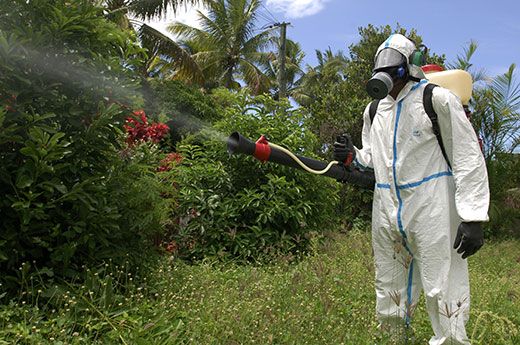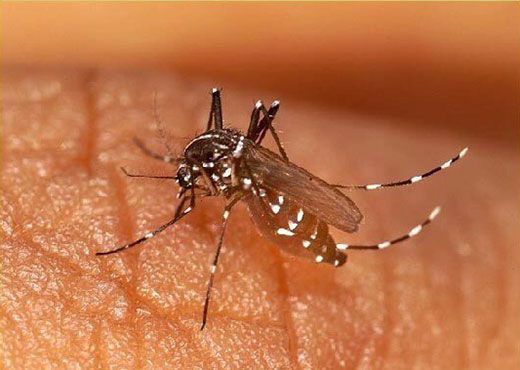The Next West Nile Virus?
The chikungunya virus has escaped Africa and is traveling around the world via a widespread, invasive, voracious mosquito
/https://tf-cmsv2-smithsonianmag-media.s3.amazonaws.com/filer/virus-Aedes-aegypti-mosquito-631.jpg)
In Kenya in 2004, spring became the rainy season that wasn’t. March turned into April, and then May, and still the rains didn’t come. The once lush countryside began to parch and drinking water slowly evaporated. Women used to fetch small buckets of water from nearby streams and ponds, but the drought forced them to travel farther. To save themselves from trudging for hours each day in the blazing equatorial heat, women began to gather several days’ worth of water in multi-gallon containers, which they stored outside their homes. What the women didn’t know was that these vessels would spark a worldwide outbreak of a viral disease unfamiliar to most Westerners—for now.
In the Makonde language of eastern Africa, “chikungunya” means “that which bends over.” The chikungunya virus causes joint pain so excruciating victims can’t stand or even sit upright for weeks or months at a time. It has existed in southeastern Africa for centuries, passed from person to person by the Aedes aegypti mosquito. The mosquito has adapted to living alongside humans, happily breeding in human houses and water containers. The drought increased the number of drinking water containers, the population of Aedes aegypti and the incidence of chikungunya cases. After infecting most of the susceptible people in the drought-afflicted area, the outbreak flickered out.
Chikungunya has usually been confined to Africa, but in early 2005, embers of the Kenyan outbreak spread to the Seychelles and Comoros islands in the eastern Indian Ocean. By June of that year, cases of chikungunya had been reported on the island of Réunion, a French protectorate 550 miles east of Madagascar and a popular European tourist destination.
A few cases of chikungunya didn’t overly worry public health officials on Réunion. The spraying of DDT decades earlier had all but eliminated Aedes aegypti on the island. The Asian tiger mosquito (Aedes albopictus), a close relative of Aedes aegypti, lived on Réunion and could potentially carry chikungunya, but it didn’t transmit the virus well enough to cause a major outbreak. During the second half of 2005, reports of chikungunya continued to trickle in. Then, in the beginning of 2006, case reports spiked. Public health officials noted 13,000 cases in the first week of March alone. By the end of the year, around 266,000 people on Réunion had been infected with chikungunya, more than one-third of the island’s residents. Epidemiologists were at a loss to explain the epidemic.
A group of French scientists sequenced the genetic material of the chikungunya virus from Réunion and compared it with chikungunya viruses from Africa. The researchers found that a single mutation had occurred on Réunion, a mutation that slightly changed the shape of one of the proteins that studded chikungunya’s surface. Previous studies showed that this protein helped similar viruses enter host cells and cause infections, which led the scientists to hypothesize that this small shape change was enough to let the virus infect the Asian tiger mosquito and use it as a ready vector.
A follow-up study showed that the mutation on Réunion let chikungunya infect the Asian tiger mosquito extremely efficiently—100 times more efficiently than the non-mutated strain infected Aedes aegypti. Chikungunya enters a mosquito’s body when it bites someone with large amounts of virus in the bloodstream. The blood enters the mosquito’s gut, where the virus pries open the gut cells and makes copies of itself. The shape of proteins on the outside of the virus determines whether it can get inside. For the older strains of chikungunya, trying to enter the gut cells of the Asian tiger mosquito was like trying to shove a square peg in a round hole. The mutation from Réunion changed the virus from a square peg to a round one.
After the virus multiplies in the mosquito’s gut cells, it travels to the salivary glands. When the mosquito bites its next victim, it squirts saliva into the bite to prevent clotting, saliva laden with the chikungunya virus. After three to seven days, the next human victim would have large amounts of virus in his or her own blood, causing fever and the agonizing joint pain for which the disease is so famous. The victim could then pass the virus to the next biting mosquito. The best way to prevent chikungunya infection, says Erin Staples, a medical epidemiologist at the Centers for Disease Control and Prevention (CDC) in Fort Collins, Colorado, “would be to avoid contact with mosquitoes.” But that’s easier said than done.
Over the past 30 years, the Asian tiger mosquito, a native of Southeast Asia and India, has spread to every continent. It travels in used tires, which are usually stored outdoors before being shipped around the world. The tires collect rainwater, the perfect location for a female mosquito to lay her eggs. Even if rainwater evaporates during the voyage, that’s no problem for the desiccation-resistant eggs of Asian tiger mosquitoes.
“When the tires get dumped in their new location and it rains on them, it’s like growing sea monkeys,” says Dina Fonseca, an entomologist at Rutgers University in New Jersey.
The Asian tiger mosquito first arrived in the United States by way of a used tire shipment to Houston in 1985. From there, it spread across the country by way of shipping routes and interstates. Although Aedes aegypti also lives in the United States, it can’t survive cold northern winters, and its presence is limited to the Southeast. The Asian tiger mosquito, however, has adapted to cooler temperatures and can live as far north as Wisconsin and New Hampshire. A widespread population of Asian tiger mosquitoes combined with globe-trotting humans means that chikungunya can arrive in the United States at any time.
“An increasingly important factor is the mobility of people,” says Paul Reiter, a medical entomologist at the Pasteur Institute in Paris. “The biggest vector of chikungunya is the Boeing and the Airbus.”
“We have seen numerous individuals who have traveled to places where chikungunya transmission is going on who have been unfortunate enough to pick up the virus and then travel back to the United States,” says Staples. The CDC has already noted more than 100 cases of chikungunya since 2006, all brought back from overseas travel.
The virus hasn’t gotten into the local mosquito populations so far, but recent outbreaks around the world show how easily the virus, with its new mosquito host, can infiltrate a new country.
In August 2007, a man returned from India to the small Italian town of Castiglione di Cervia, 115 miles south of Venice along the Adriatic Sea. Shortly after his arrival, he visited the doctor with a high fever, headache, rash, and joint pain. By the time public health authorities realized that the man was ill with chikungunya, more than 100 other people in Castiglione had developed the virus. Part of what drove this outbreak, Fonseca says, was the Italian habit of long, leisurely outdoor meals. This tradition gave the Asian tiger mosquito, which had arrived in 1990, ample opportunity to bite people.
Ongoing outbreaks of chikungunya are occurring in India, Southeast Asia, New Caledonia and Brazzaville, the capital of the Congo Republic, where more than 1,000 cases had been reported in early June.
The best, and most disturbing, lesson for how a possible chikungunya outbreak could strike the United States is the West Nile virus, Staples says. Both viruses are transmitted by mosquitoes. Both were relatively obscure viruses from Africa that caused massive outbreaks when they reached other locations. And both cause serious and potentially deadly symptoms. West Nile virus first arrived in New York in 1999, and that one introduction was enough to permanently change the disease landscape of North America. West Nile virus has spread across the continental United States and is now endemic, meaning that the virus is transmitted within the population year after year.
The viruses have some important differences, however. West Nile infects birds as well as humans, and once the virus entered the bird population, halting its spread became impossible. Chikungunya would be confined to humans (it infects other primates in Africa but is not known to infect any North American animals) which gives epidemiologists an advantage in fighting the disease.
Researchers have begun to develop vaccines and treatments for chikungunya. One vaccine candidate is currently being tested, and researchers in France and Singapore have identified potential immunological treatments to help reduce the severity of infections. Epidemiologists at the CDC and the World Health Organization are working hard to make sure that chikungunya doesn’t spread any farther, but with no treatments yet and no ability to stop the Asian tiger mosquito, their goals might be nearly impossible to achieve. All we can do, public health officials and travelers alike, is watch and wait.
Carrie Arnold has been following the chikungunya outbreak since 2008, when she wrote about it as her thesis topic at Johns Hopkins University. She lives outside Norfolk, Virginia, and is working on her third book.



